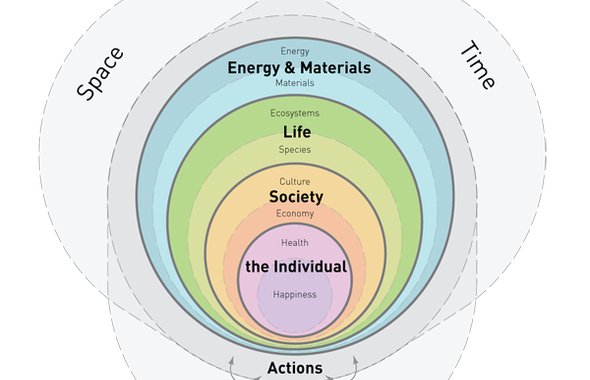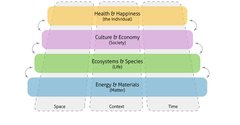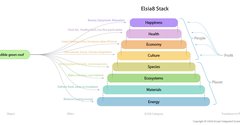
Symbiosis in Development: ELSI
Article > Categorization system
ELSI is a categorization tool to index the different areas of interest for integrated development. It replaces the People, Planet, Profit system to offer a more structured approach that yield more complete and insightful results.
ELSI is part of the Symbiosis in Development sustainability methodology.
One of the main difficulties of designing truly sustainable solutions is the complexity of scope and domain that need to be taken into account. Projects often focus on one or at most a few subject areas, such as energy, waste, or materials. It is rare for a project to be developed that aims to be sustainable in a truly integrated sense.
People, Planet, Profit?
The usual way of mapping the different impact areas is done in the “People, Planet, Profit” profile, also called the triple bottom line, or triple P (PPP). While this is inspirational and useful in a communcation context, it’s not an adequate system to fully evaluate the spectrum of sustainability.
PPP misses aspects, lacks hierarchy and the “profit” aspect is highly debated, often replaced by “Prosperity”. While these are noble attempts to improve on the PPP framework, structurally ELSIA brovides a much more coherent framework for evaluation and categorisation. Using PPP as a structure framework for indicator development or spetrum definition will undoubtedly lead to undesired externalizations.
ELSI in detail
The ELSI system helps map the larger set of relationships between the project at hand and the ways in which it will influence the world around it. This system can be used for management and policy issues as well as design problems. It is essentially a tool for “systems thinking” that functions by systematically allowing the user to map relationships between objects. It can be used for indicator selection, effect mapping and many other stages of systems analysis.
ELSIA takes its name from the five main categories seen in the SiD stack diagram to the right. The categories are:
- Energy & Materials (Matter)
- Life (Species & Ecosystems)
- Society (Economy & Culture)
- Individual (Health & Happiness)
The categories of ELSI are functionally nested within each other. All materials are made from energy, and all ecosystems are made of materials. The economy is a subset of culture, just as each individual is always a part of society, and so on.
Using the SiD stack and the ELSI relationship system one can prevent developing systems that improve specific domains, but externalize issues to other key areas.
ELSI can be represented in various ways. Below you can see the SiD ELSI4 Stack. We only use ELSI4 as a communication tool. For all assessment, we use ELSI8 (further below).
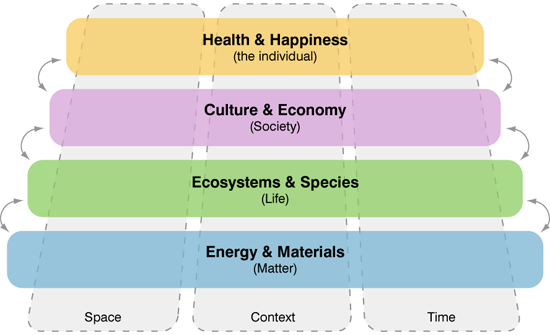
The ELSI stack is effective at communicating the causal relationship between the different categories, with the moat goal oriented (happiness) at the top, and the most fundamental requirement at the bottom (energy), with the necessary bridging categories in between.
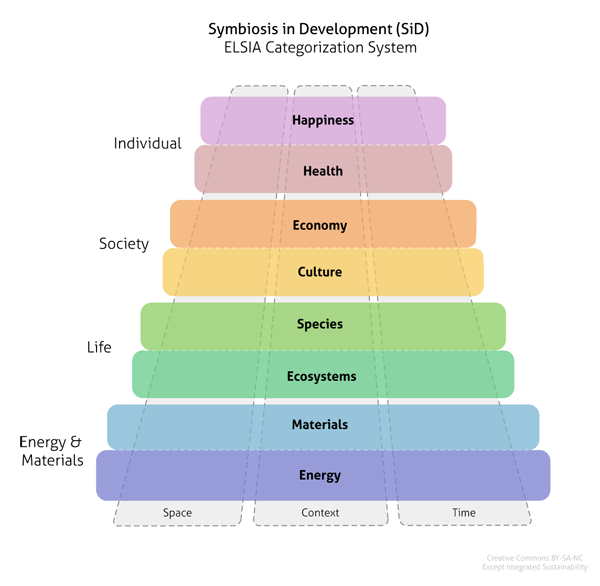
The ELSI relationship system and SiD Stack are part of the Symbiosis in Development (SiD) sustainability methodology.
Media & Downloads
Author
Except
Integrated Sustainability
 +31 10 7370215
+31 10 7370215
